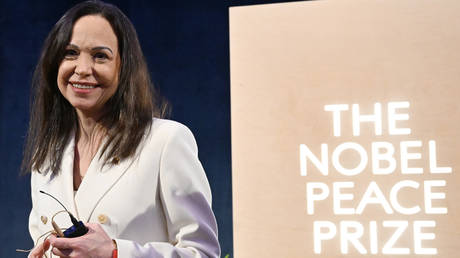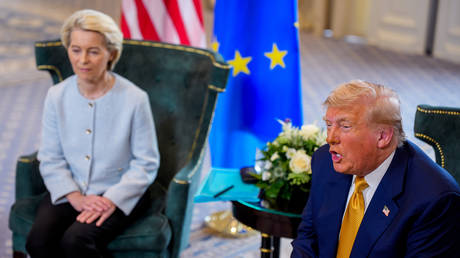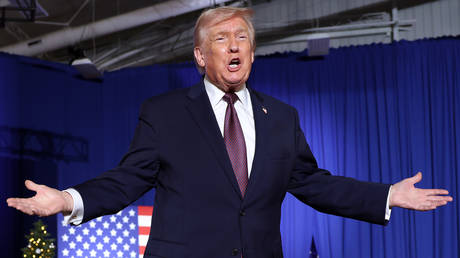
A NASA astronaut has alerted the agency to sonar-like echoes coming from Boeing’s Starliner, which is docked with the ISS
Boeing’s Starliner spacecraft has begun to emit an unusual pulsing noise, NASA astronaut Butch Wilmore told mission control on Saturday. Neither Wilmore nor the agency’s staff on the ground were immediately able to explain the sound.
Wilmore and crewmate Suni Williams traveled to the International Space Station (ISS) on the Starliner in June, in what was the spacecraft’s maiden crewed voyage. However, malfunctioning thrusters and helium leaks have left the craft docked to the ISS and incapable of safely returning to Earth, with Wilmore and Williams stranded on the ISS until a SpaceX Dragon capsule can bring them back next year.
In a purported radio transmission to the Johnson Space Center in Texas on Saturday, Wilmore said an unusual noise could be heard from the Starliner.
“I’ve got a question about Starliner,” Wilmore told mission control. “There’s a strange noise coming through the speaker… I don’t know what’s making it.”
Wilmore then held his microphone up to the speaker, until mission control heard the repetitive gong-like noise.
“Alright Butch, that one came through. It was kind of like a pulsing noise, almost like a sonar ping,” mission control replied.
“I’ll do it one more time, and I’ll let y’all scratch your heads and see if you can figure out what’s going on,” Wilmore said, before the unexplained noise repeated. “Alright, over to you. Call us if you figure it out,” he concluded.
Anyone with a VHF receiver and a high-gain antenna can listen to radio transmissions from the ISS. The exchange between Wilmore and mission control was picked up by American meteorologist Rob Dale, who posted a recording of the conversation to a space travel forum on Saturday.
Before lifting off in June, Boeing’s Starliner project suffered years of delays and a budget overrun of $1.5 billion. Its first crewed flight was originally scheduled for 2017, but repeated technical glitches and certification issues saw that date pushed back to May of this year. A helium leak in the Starliner’s onboard propulsion system resulted in multiple launch dates being scrubbed that month, until Boeing eventually declared that a “small helium leak” was not a “safety of flight issue,” and the craft was safe for spaceflight
While en route to the ISS, the Starliner’s crew reported four helium leaks and problems with five thrusters, and another leak was revealed soon afterwards. While Boeing reportedly insists that the malfunctioning Starliner is capable of bringing Wilmore and Williams home safely, NASA announced last week that it will return to Earth with no crew, while the two astronauts will come home in February aboard a capsule operated by Boeing’s leading competitor, Elon Musk’s SpaceX.




